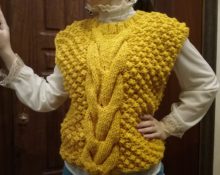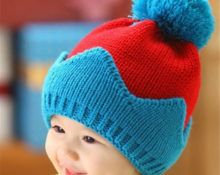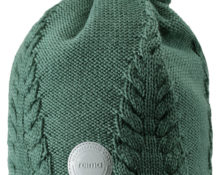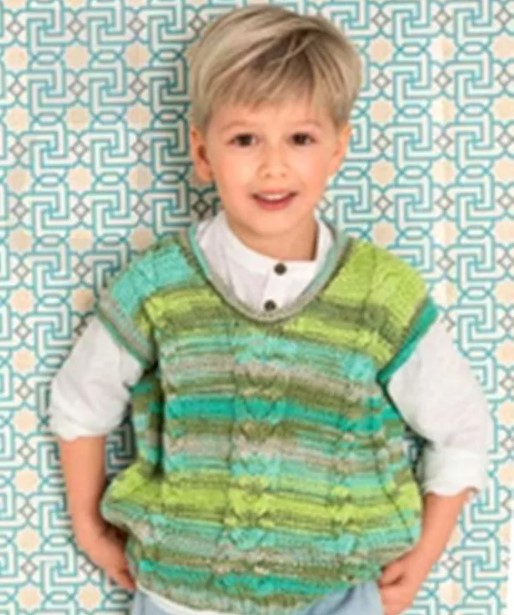 A sleeveless vest is a very necessary piece of a teenage boy's and toddler's wardrobe. Parents dream that their children do not get sick. Stop wrapping up, it is not a jacket that should be put on the baby in windy weather on warm days, but a sleeveless vest (vest). The baby's back will be warm and will not overheat. Further in the article there are interesting models and the most fashionable ones. In them, the baby will be the most fashionable and protected from drafts and colds.
A sleeveless vest is a very necessary piece of a teenage boy's and toddler's wardrobe. Parents dream that their children do not get sick. Stop wrapping up, it is not a jacket that should be put on the baby in windy weather on warm days, but a sleeveless vest (vest). The baby's back will be warm and will not overheat. Further in the article there are interesting models and the most fashionable ones. In them, the baby will be the most fashionable and protected from drafts and colds.
Warm yarn and knitting needles
Thick threads do not necessarily need to be considered warm yarn. Some threads, although thick, do not heat up enough to be classified as warm. And there are very a thin thread of mohair that will warm you up faster.
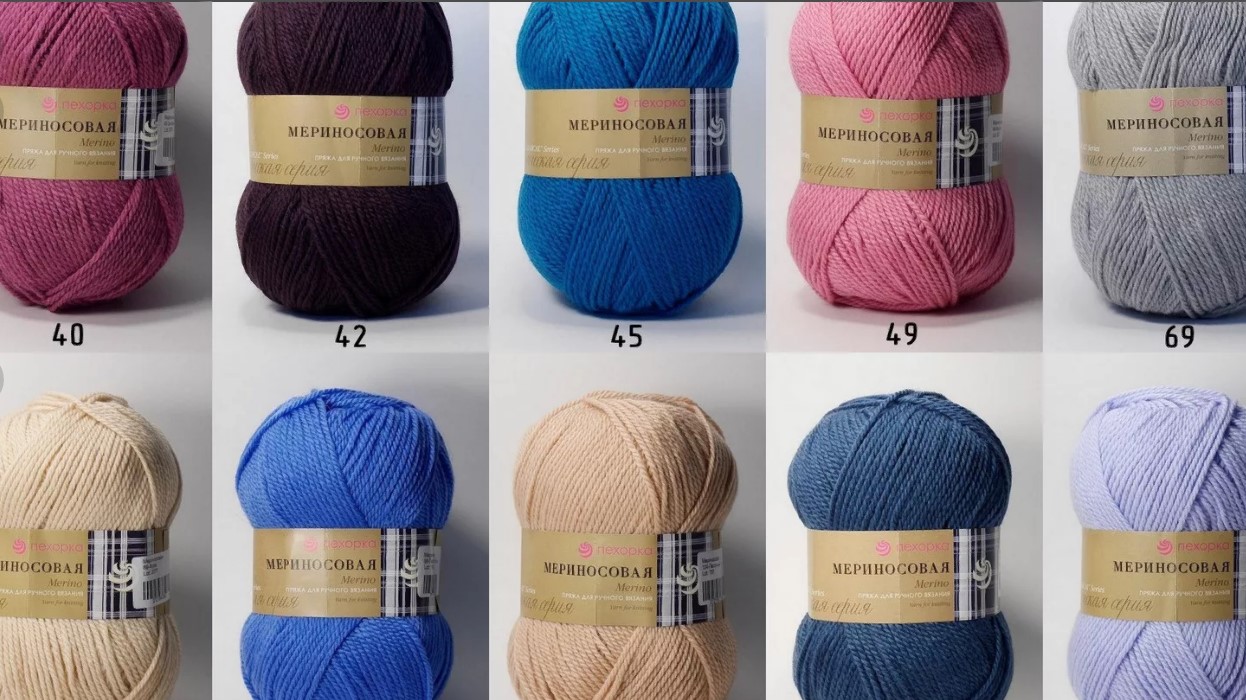
It's all in the composition. It looks quite thin and even lacy, but it gives off so much warmth. Very warm threads with a large wool content.
Merino threads are often used for children and they have a lot of merino wool, they are soft and warm. Very pleasant to the body. Knitting needles that are suitable for knitting vests are, first of all, models based on thread thickness. And they will differ in their numbers.
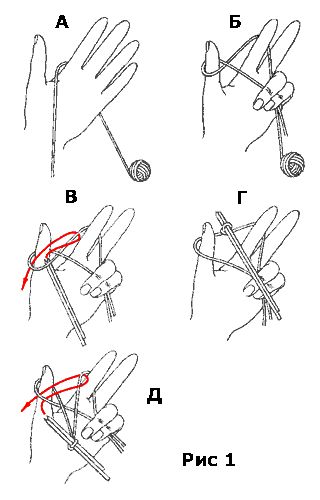
Set of first stitches for 2 knitting needles
Important! You can’t knit a vest with stocking needles (a craftsman can, of course, use them to make a collar), but circular and regular knitting needles will be quite to the liking of knitters and vests.
Knitted children's sleeveless vest (vest) for a boy
Knitting something with knitting needles is a pleasure. Moreover, the master will not only enjoy the work itself, but also admire the resulting work. Next are two new models of sleeveless vests that can be easily knitted. Each model has its own description with a step-by-step and convenient section. Also shown are diagrams and the result of the finished work.
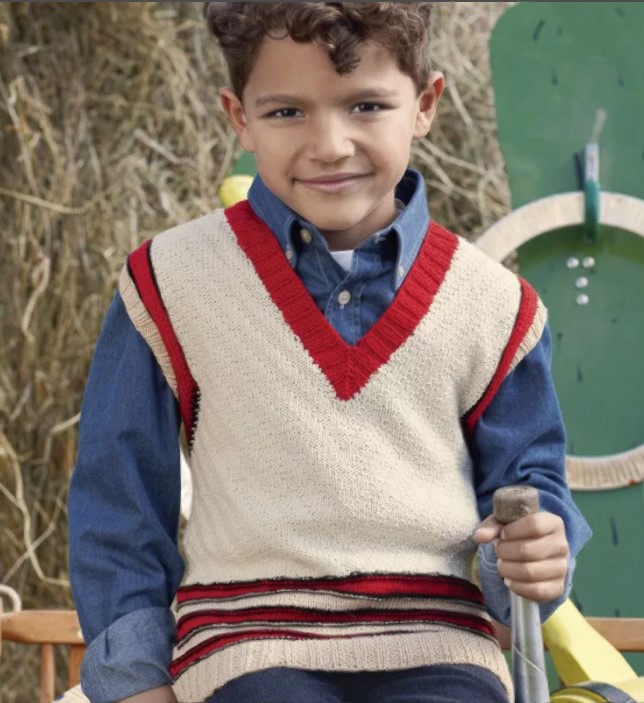
Knitted blue sleeveless vest for boys
This is the coolest model. She has everything that our children love so much - this and huge hood. There is also a double-sided lock that the child can adjust at his discretion.
The fabric is based on very interesting weaves with alternating front and back stitches. It looks very unusual. Part of the armhole deceives the craftsman in that there is additionally an elastic band there; it is difficult to identify the line of its beginning, since the diamond pattern itself is very reminiscent of a continuation of the elastic band. Work diagrams and descriptions will help you understand all this celebration.
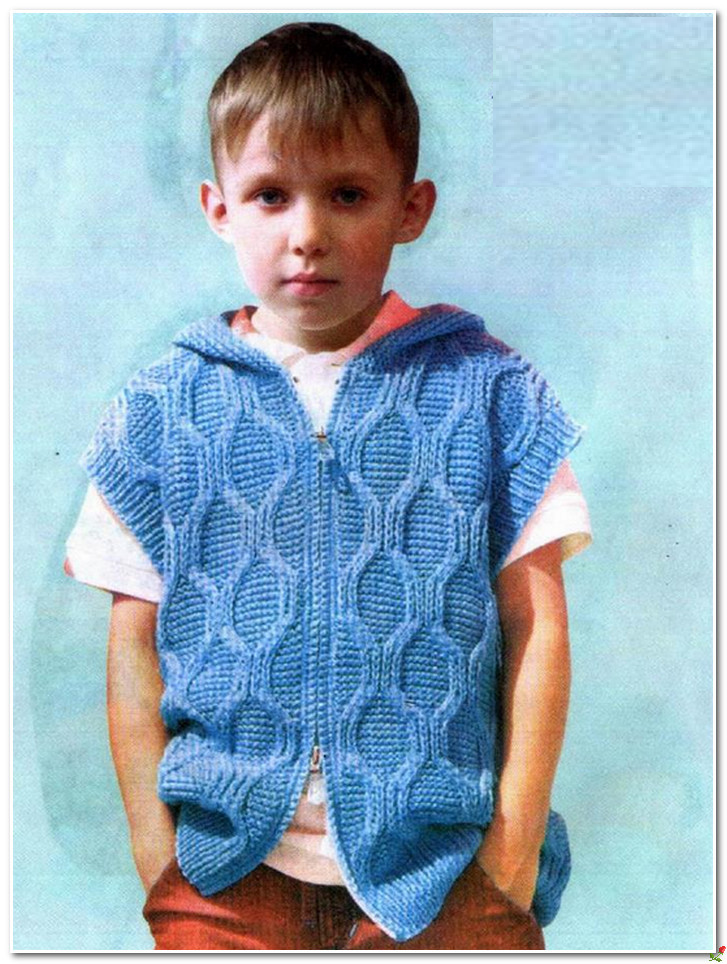 To work you will need:
To work you will need:
- Pekhorka for children (blue);
- knitting needles according to the thickness of the thread;
- two-way zipper.
Measurements
Measure the width of the child's back and add 6 cm to the measurement. The model should be very loose. Next, measure down from the shoulder line to determine the length of the product. It should be at the level of the hip circumference (you can lower it another 5 cm down).
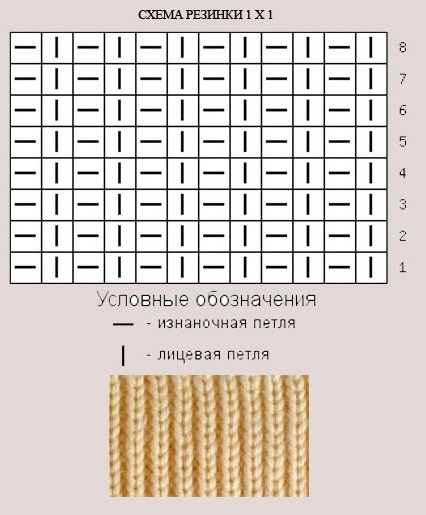 Sample
Sample
Knit a small square with diamonds according to the provided pattern. If you use a children's pekhorka thread of medium thickness, then 30 loops will be enough.Calculate the knitting density for this square, after stretching the fabric a little. You should get two numbers - this is the number of loops horizontally and the number of loops vertically. Using these indicators, calculate the set of loops for the back. For the front piece, use exactly half the width of the back.
Back
First knit an elastic band 10 cm high. This is a 1*1 elastic band and a pattern is provided for it. Next, make the transition to the main canvas.
Important! In the initial set of loops for the back, be sure to take into account the number of loops for repeat, so that you do not need to decrease the loops, this will be very noticeable and ugly.
Knit the required number of rows. It is very important not to make any armholes or necklines in the model, since the hood will be knitted later. Simply close off the stitches of the last row. You can use a simple loop closure scheme for this.
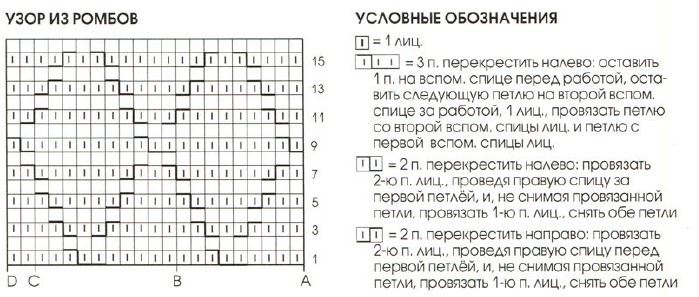 Shelf
Shelf
The right and left fronts are knitted exactly the same. This is exactly half the back. It is also important to take into account the number of repeat loops. They should be the same in height.
Hood
It is more convenient to first sew the shoulder seams of the back and shelves before making the hood. Then cast on loops along the edge of the neckline, the hood should be voluminous and therefore there should be exactly as many loops as the width of the back. Knit the fabric according to the main pattern to a height of 1/2 the length of the vest. Next, fold the corners of the hood together and make a middle seam. You will get a triangular hood.
Assembly
After the hood it is necessary sew side seams on the vest. Sew the zipper with threads to match the base. And the last thing is the armhole binding. It is this detail that is misleading. You need to pick up loops along each edge of the armhole and use the already familiar elastic band to complete 6 rows in a circle.
At this point, the product is ready and you can call the boy for the first fitting.
Vest in garter stitch
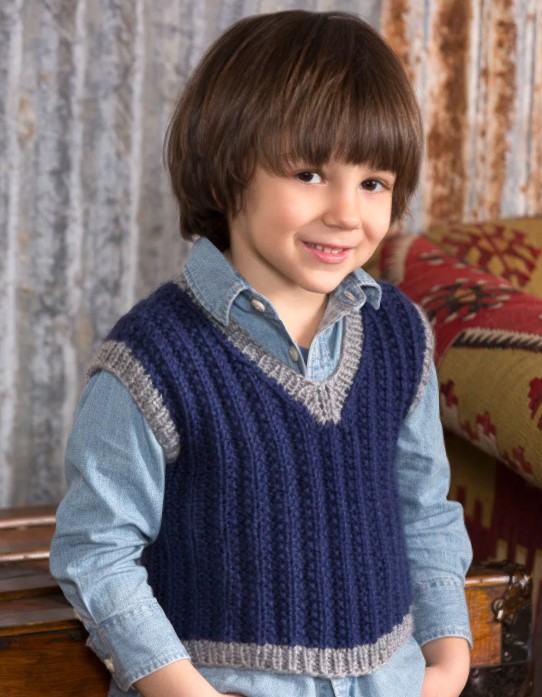
A very interesting model of this vest. This product will make any child stand out. Coarse thread and tight knitting will make the product even warmer. Beautiful braids and embellishment go very well with the garter stitch base.
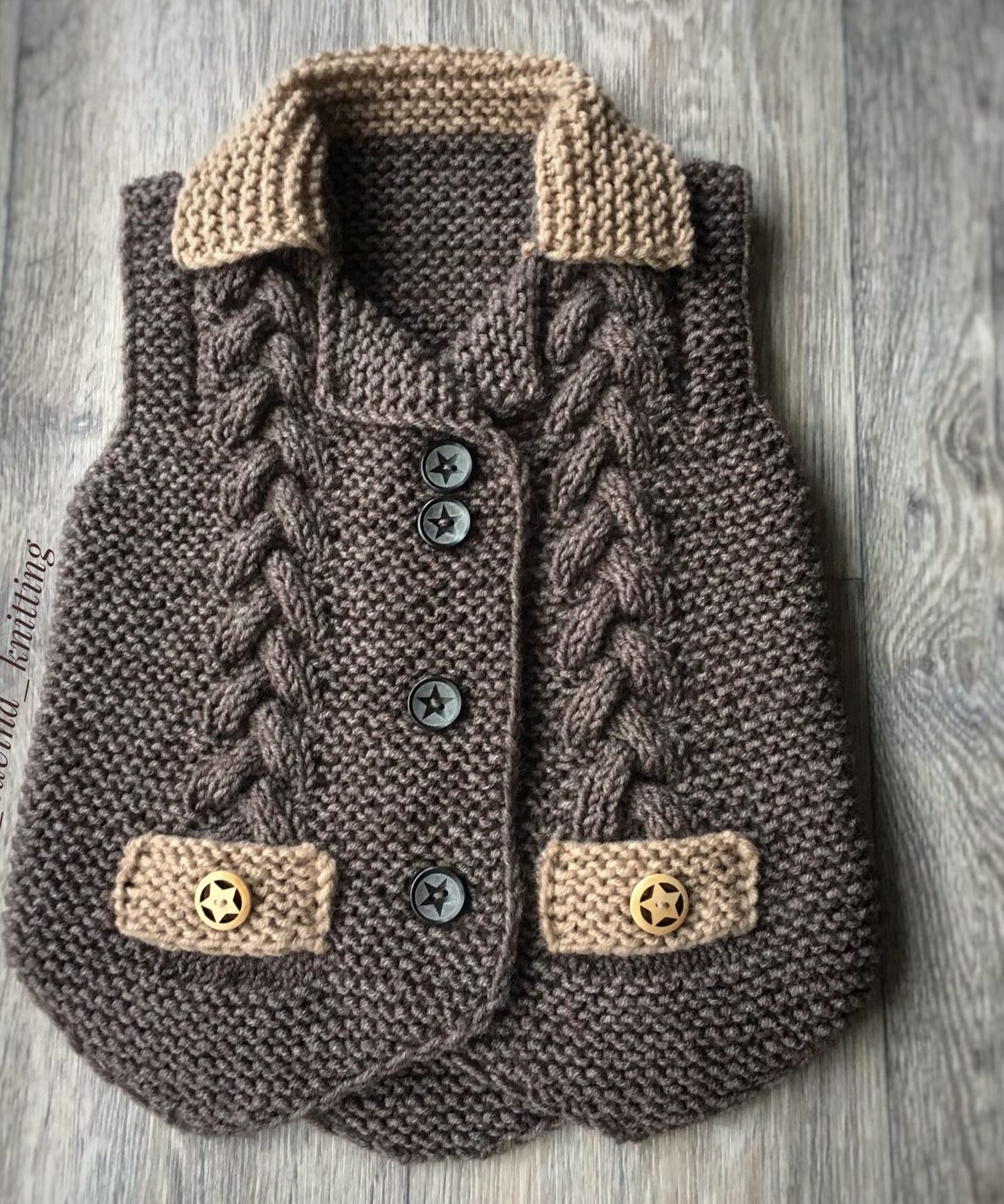 To work you will need:
To work you will need:
- baby yarn with thick thread;
- knitting needles according to the thickness of the thread;
- buttons.
Measurements
Measure the width of the boy's shoulders. Measure the length of the product from the shoulder line to the desired length.
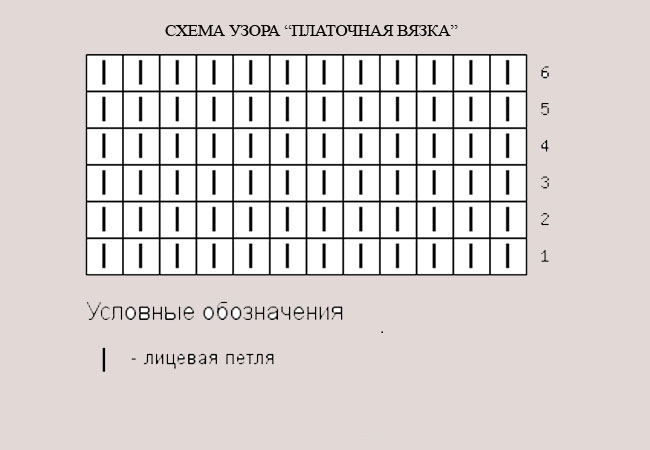 Sample
Sample
It is better to use garter stitch for the sample. Since it is this canvas that occupies most of the model. Knit a small square and measure the number of stitches for tightness. Next, calculate each measurement for the baby's size using loops.
Back
The back starts from the bottom and is knitted upward. To set, do not use the entire width of the back, but only 1/5. Since the bottom starts with a small corner. Add two stitches on each row, one on each edge. Adding must be done until the number of loops for the width of the back is reached. Then knit without changes until the middle size of the height of the product. After this limit, you will need to make a slight bevel for the armholes. From each edge, close 4 times with one loop in one row. Next, knit to the desired height and bind off the loops according to the fabric pattern.
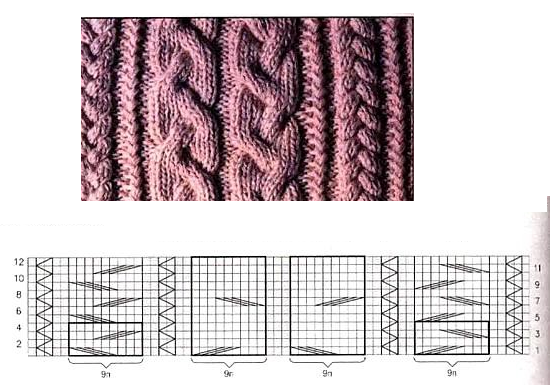
Shelf
The right shelf and the left are two identical, mirror parts. The width of each is 1/2 the width of the back, but with the addition of 3 loops for wrapping. Knit according to the back pattern. That is, first divide the total number of loops by 5 and the set will be small. Make increases symmetrically and knit with increases to the required width.
Next, place the braid in the center of the canvas according to the diagram provided. Knit until the end of the height and close 6 loops from the fastener side 2 cm. Next, knit another 2 cm and completely close the edge. Knit the second piece in the same way. For the right front, make yarn overs in the middle of the overlap for the buttons.
Assembly
Sew the details at the shoulders and use a contrasting thread to make the collar. Use garter stitch for it. Do not do it along the entire edge of the neck. Leave the place where the loops were closed 2 cm before the end of the height. Knit the collar with a contrasting thread for 4 cm.
Decoration and clasp
For fastening use buttons. Sew them on the left part symmetrically to the yarn overs. For decoration, use small garter stitch fabrics made of contrasting thread.
They should be slightly wider than the braid pattern. Sew them to the beginning of each braid and decorate with beautiful star buttons. So the chic model of a vest for a child is ready.
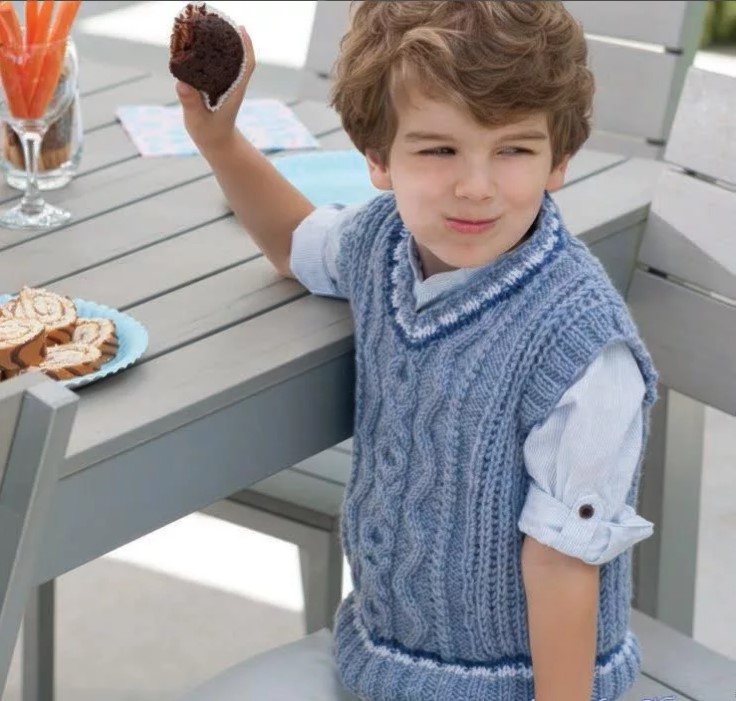 Knitting vests with beautiful patterns is not so difficult, especially if you have such beautiful patterns at hand.
Knitting vests with beautiful patterns is not so difficult, especially if you have such beautiful patterns at hand.


 0
0
